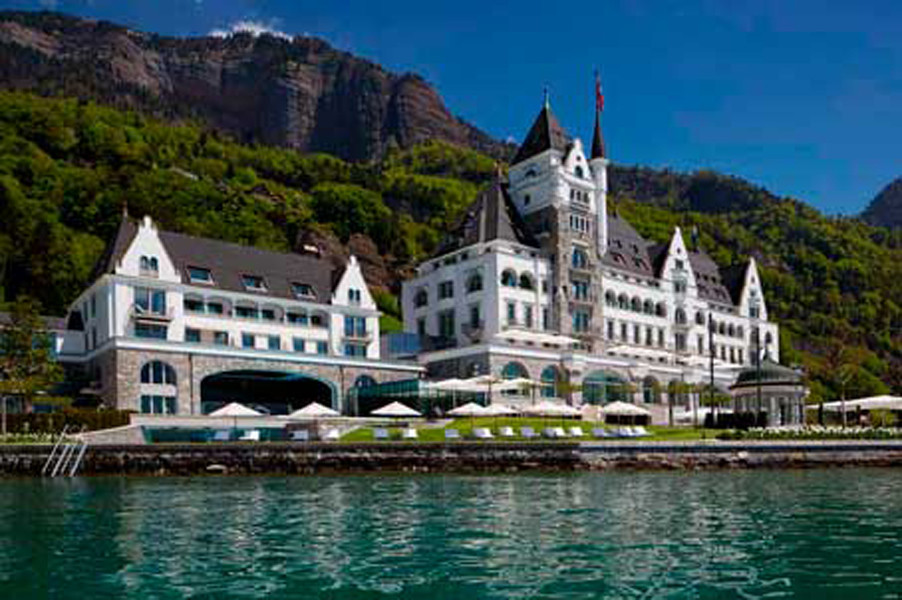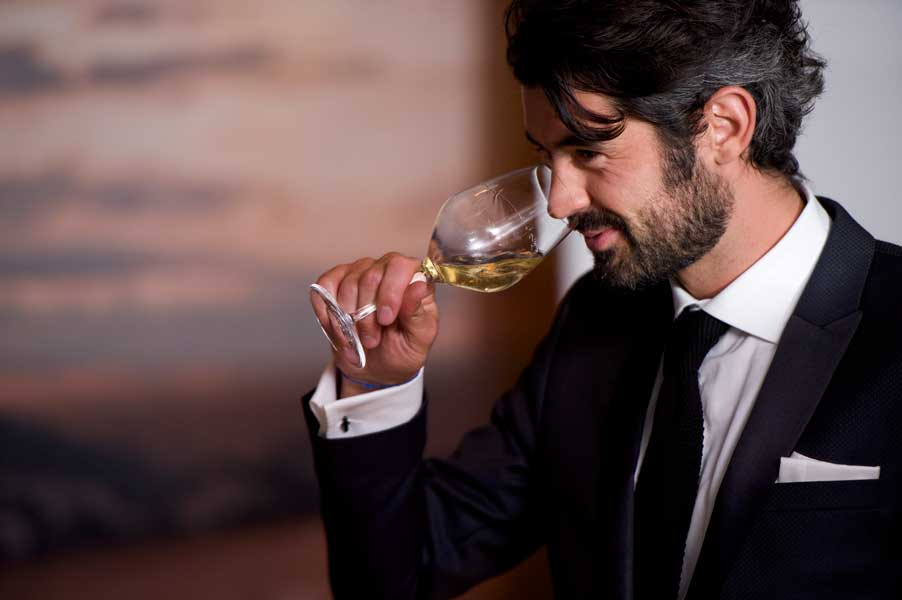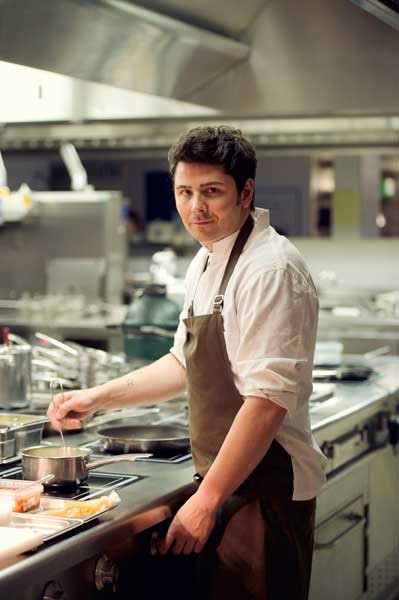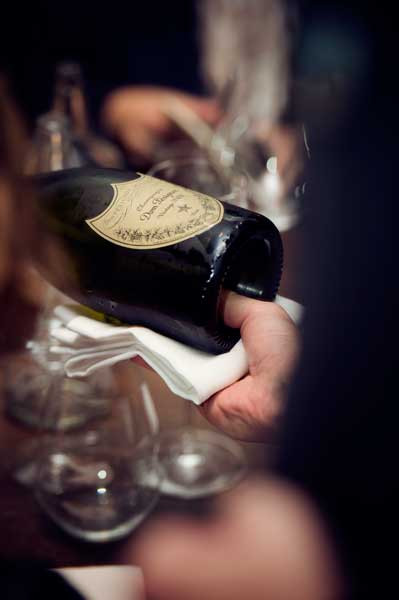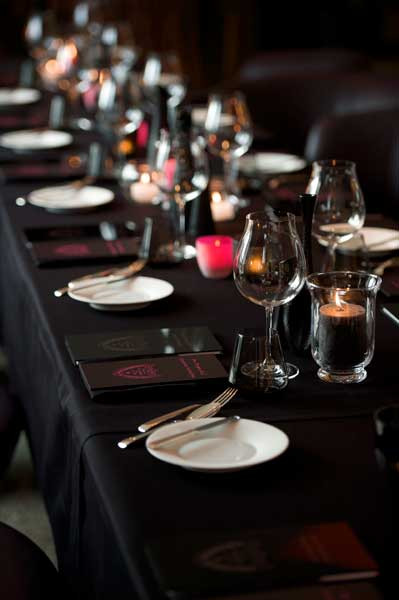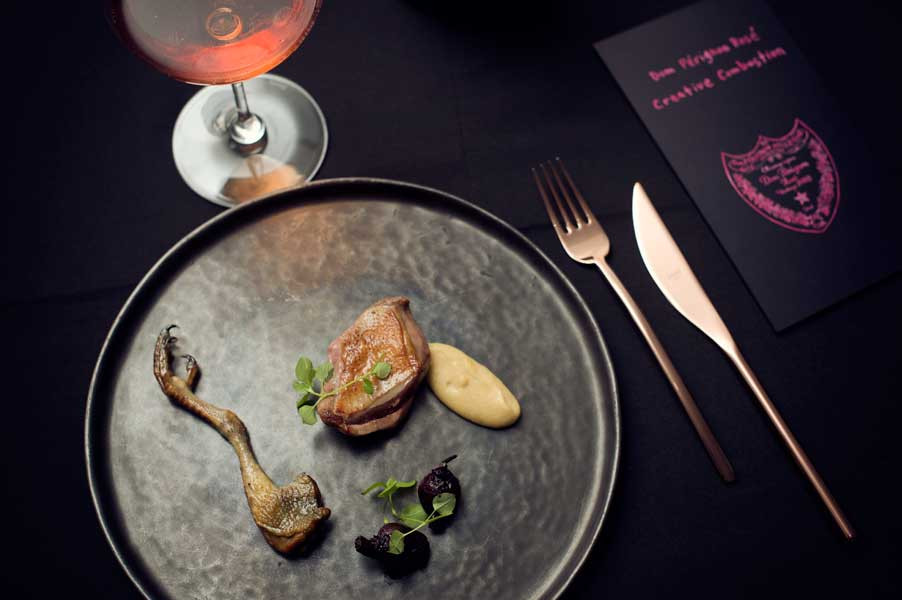Can you remember all the pupils you joined forces with while in school? Some you might still cross paths with on a regular basis, others you might have lost all contact with and no Facebook app can help you out. What might have happened to him, what became of her? Such a joy it is then to find each other again – even more when in a context never anticipated.
So it happened to me the other week in the stunning location of the restaurant ‘focus’ at the Park Hotel Vitznau, just recently awarded Hotel of the Year, in Switzerland’s canton of Lucerne, where the house Moët Hennessy invited press only to a daring dinner to unveil the Dom Pérignon Rosé Paradox menu: a bold collection of nine dishes that revel in the facets and paradoxes of Dom Pérignon Rosé Vintage 2003. At a ‘creative combustion’ in March 2013, Dom Pérignon summoned nine of the world’s most innovative chefs to contribute to the menu that followed their reflections of the wine.
We were served the following menu by top head chef Nenad Mlinarevic, holder of 17 GaultMillau points and two Michelin stars, who is known for his modern and personal cuisine, comprised of flavourful culinary contrasts in which he harmoniously combines aromas:
Hamachi Sashimi Ceviche Style with Rhubarb and Scallop Crisp (Oliver ‘Ollysan’ Lange from London (The Magazine))
Crispy Pea Vichyssoise (Karim Lakhani and David Deshaies from the United States (Palace Hotel))
Salmon, Rabbit and ‘Hazelnut’ Butter Salad (Matteo Baronetto from Turin, Italy (Del Cambio))
Roasted Brioche, Pigeon Breast and Rhubarb (Nenad Mlinarevic from Switzerland (Park Hotel Vitznau))
Red Fruits Beets (teamwork of the nine chefs)
Before dinner we were given an introduction by Nicola Pasquero of Moët Hennessy Suisse on the art of champagne making and the history behind theDom Pérignon ‘all vintage’ philosophy. Their products are not a luxury version of a good champagne, rather vintage throughout and made with the finest grapes only. The Dom Pérignon Rosé Vintage 2003 is high in minerality through tension and pressure of the red fruits; a very unique champagne of not pink but copper colour. The wine is on the rich side, powerful on the palette and dark and complex in the soul – nothing like a pinky champagne. That might explain the logo change from pink to a black label, which goes perfectly well with the length and power of the ripe, evolving finish and its notion of red wine. It takes eight to nine years to to create a rosé and it wasn’t until 1959 Dom Pérignon came up with their first one, even though the company looks back on a history since 1921.
Of the menu especially created for the Rosé Paradox we tasted five dishes and combined the enological side with the culinary perfectly. The combustion was a creative playground, harmoniously bringing together flavours, colours and sensations that are at once luminous and dark, ripe, rich and airy, mineral and sensual, ample and precise, inviting and mysterious. The following morning I was given the chance to briefly chat to the master of excellence and the first five of my precious 15 minutes with the chef passed by with us trying to find out why we thought each other looked familiar. Nenad Mlinarevic just happens to be the Slovak boy with the broken German and beautiful dark eyes I went to primary school with in a district of Zurich.
Nenad, we’ve just talked about Hottingen, where we both grew up. I’ve heard this beautiful story: Your father was the conductor of a little cable car leading up the hill to the renowned Dolder Grand Hotel, and when you told him you’d like to become a chef he took you up there and asked for an apprenticeship placement for you.
It was more about that I had to do a practical training at 15 and see which direction I wanted to take. My father knew the head chef at the Dolder and was able to mediate. After a week I knew this was what I wanted to learn. Until today cooking has stayed the only thing I want to do. For me it’s a calling and a passion, not just a job.
What does ‘Gourmet’ mean to you and your kitchen?
Gourmet means surely nothing of the everyday, something exclusive, special – it should be an experience to eat here or gourmet food in general. Gourmet is gourmand, something for aficionados.
How is it for you to live this passion here at the Park Hotel? I heard you’re going to Zurich every now and then still.
I’m a city person and have my family there. During the week I’m here, work and enjoy the quiet countryside with this fantastic view on the lake. Yet I need the city as compensation.
What are you missing?
It’s a bit too quiet here; you walk through the town and all you have is a post office and a supermarket – that’s it. Sometimes I feel the need for some dirt, stress and hecticness. London and New York are my favourite cities and London is the small New York. I do try to get time to travel – I’m off for a couple of days every now and then when I feel the need to get away. It hugely helps the creativity, else you’re too constrained with always the same environment and people. I need to escape and come back with an aired head; not recovered but inspired.
You are 33 years old and have 2 Michelin stars – is that exciting or can it get too much for you?
We are lucky that we’re always being talked about. Now with the second Michelin star and being the hotel of the year there has become more buzz, but it’s not that I have to give interviews non-stop. The PR department here is taking a lot of work off me. We’re a small team in the kitchen and I’m very attuned to that part of my role.
The design of the Park Hotel Vitznau is conceptually inspired by nature and the vistas offered by the building’s waterside location. How does this manifest in your cuisine?
I’m not a big meat eater; fish is more my thing. The quiet and isolation here allow me to focus – I don’t get distracted like I would in a city, where you could do so many things. When I come to work here I work, full stop.
You say you’re not a big meat eater, yet from yesterday’s dinner the dish with a full pigeon leg was the highlight.
Yeah, that was fun, even the claws were still on it! Guest depending, they might find that quite irritating. I like to utilise everything, whether vegetables, fish or meat you have to respect the product and the manufacturer. Taking only the best bits of an animal, say the pigeon breast, I find lacks respect. We cooked the pigeon very slowly and gently in the water bath at 58 degrees. It’s a very delicate, fine, tender meat without any sinews or fat like a steak, so if not done properly it gets dry easily.
The Dom Pérignon Paradox menu was created by nine different chefs from all over the world and you cooked five dishes, of which only one was your own recipe – how was that for you?
You have to let it happen. When asked whether I’d do this event I was told I would have to cook dishes not on my menu, but I was able to go our direction when it came to presentation. But I must say it was quite special to serve something I didn’t create myself. Not in a negative way. It’s a respect towards the colleagues to bring it onto the plate as they had imagined it – as I would expect it from them, too. When I read the recipes some were a bit tricky, and I wasn’t sure if they would taste as good. But then we cooked and tried them and it was ok. We tried them in Paris, but to cook the exact same dish is a challenge. I’m happy with the outcome.
Your dishes are visually appealing and you’ve talked before about ‘show cooking’ in front of live audiences. In the culinary world, where taste presides, how important is the presentation in your opinion?
The visual is the first impression, so counts for a lot – it either intrigues you or not – but the taste is what stays. I remember a dish that tasted good, not a dish that only looked nice. It can look superb, but if it doesn’t match the taste and the balance in the dish isn’t there, the whole work was for nothing. The visual is important to me, I’m an aesthete I’d say, especially in the details, but puristic.
The communal Mediterranean approach to cuisine has been a long-held influence on you. Is there any style of cuisine that you would reject?
I like to eat chick peas, Thai or Chinese, but oriental is definitely not my thing to cook. I’m more the mediterranean type.
Tea or coffee?
Most of the time I’d choose tea, especially when ill. I don’t drink enough tea and I don’t like coffee.
Is there anything you don’t eat?
Snails I would never eat and have never tried for ethical reasons. And… venison and meat in general. I like to cook and prepare it, but I would never buy a piece of meat for myself. That’s something you’d never find in my fridge. Never. Eight or nine years ago I used to work in a butchery to see how it works and that smell has never left my nose. That’s why. When I clean meat for my guests I clean it thoroughly: no tendons, no fat; it disgusts me. I know that’s a bit strange for a chef. I eat all vegetables. As I kid I didn’t like spinach or broccoli, but then it depends on how you prepare it. I love fish.
Over the past century we’ve become increasingly wasteful and reliant upon livestock, which will have an adverse impact on the following generations. How would you change contemporary Western society’s approach to food?
That’s difficult. It’s a habit. You cannot turn this around on the fly. The people working with me become very sensitised to it. We’re also all very spoilt here. In other countries you might not have the options or the financial possibilities to choose whether you want to eat a filet or an entrecôte. They would eat more intestines because it’s cheaper. In Switzerland you don’t even get these things. We utilise everything, for example for a sauce or paste. The pigeon intestines and hearts I’d use to make a lovely creme. You can prepare and disguise everything so its origin isn’t obvious. It all comes down to packaging – and fooling the people a bit.
What advice would you give young, aspiring cooks?
You need to find a lot of stamina, don’t be slack, be open and above all consistent. You can’t say: today I feel like cooking, tomorrow I don’t. You have to be sure that it’s what you want and then it’s a long lean period until you are somewhere – if you’ll make it at all. There are countless great chefs who don’t make it, because the last few percent were missing; they didn’t get to know the right people or they gave up.
NoéMie Schwaller
